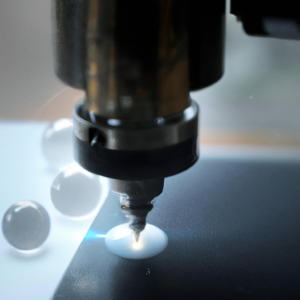Data-Driven Next-Gen Business Innovation
In the rapidly evolving landscape of manufacturing, staying ahead of the curve is not just an aspiration—it’s a necessity. As industries worldwide embrace the digital revolution, the importance of data-driven decision-making cannot be overstated. In this article, we delve into how data is driving next-generation business innovation, transforming traditional manufacturing practices into intelligent, agile, and future-ready operations.
Introduction
The manufacturing sector has always been a cornerstone of economic development. However, the advent of digital technologies has introduced new dynamics that reshuffle the traditional paradigms of production and management. At the heart of this upheaval lies data, which, when harnessed effectively, becomes a powerful catalyst for innovation. By leveraging data analytics, manufacturers can enhance product quality, optimize operations, and foresee market trends, thus paving the way for next-gen business models.
Section 1: The Role of Big Data in Manufacturing
Big Data has transformed the manufacturing industry by enabling businesses to analyze vast amounts of information to uncover patterns, correlations, and insights. This data-driven approach allows manufacturers to improve decision-making processes and enhance operational efficiency. With the integration of IoT devices, machines are now capable of generating a continuous stream of data that can be monitored and analyzed in real-time.
For instance, predictive maintenance powered by Big Data analytics helps in minimizing downtime and reducing maintenance costs. By analyzing historical data and real-time machine performance, manufacturers can predict equipment failures before they occur. This not only saves money but also ensures a smooth production process.
Section 2: AI and Machine Learning as Innovation Drivers
Artificial Intelligence (AI) and Machine Learning (ML) are at the forefront of the manufacturing revolution. These technologies allow for the automation of complex tasks, leading to increased productivity and reduced human error. AI algorithms can analyze data faster and more accurately than traditional methods, providing insights that were previously unattainable.
Machine Learning, a subset of AI, enables systems to learn from data and improve over time without being explicitly programmed. In manufacturing, ML algorithms can optimize supply chain management, improve quality control, and enhance customer personalization. By predicting demand trends, ML helps manufacturers adjust production schedules and inventory levels accordingly, reducing waste and increasing efficiency.
Section 3: Digital Twins and Virtual Simulation
The concept of digital twins is becoming increasingly prevalent in modern manufacturing. A digital twin is a virtual model of a physical product, process, or system that uses real-time data to simulate and predict performance. This technology enables manufacturers to test and optimize products and processes in a virtual environment before making any physical changes.
Digital twins help in identifying potential issues and inefficiencies in the manufacturing process, allowing for proactive solutions that save time and resources. Moreover, they facilitate better collaboration between departments and improve communication throughout the production cycle. Virtual simulation, paired with digital twins, provides a comprehensive view of the manufacturing process, enhancing decision-making and reducing risks.
Section 4: The Impact of Cloud Computing
Cloud computing has emerged as a game-changer in the manufacturing industry by providing scalable and flexible solutions for data storage and processing. With cloud platforms, manufacturers can access and analyze data from anywhere, at any time, enabling real-time collaboration and decision-making.
The cloud also supports advanced analytics and AI applications, allowing manufacturers to process large datasets without the need for extensive on-premise infrastructure. This reduces costs and increases efficiency, enabling companies to focus on innovation and growth. Furthermore, cloud-based solutions enhance supply chain visibility and agility, helping manufacturers respond quickly to market changes and customer demands.
Section 5: Cybersecurity in the Age of Data
As manufacturing becomes increasingly data-driven, the importance of cybersecurity cannot be ignored. Protecting sensitive data and safeguarding against cyber threats are crucial for maintaining trust and ensuring business continuity. Manufacturers must implement robust cybersecurity measures to protect their digital assets and comply with industry regulations.
Adopting a proactive approach to cybersecurity involves regular risk assessments, employee training, and the use of advanced security technologies. By securing their data, manufacturers can prevent data breaches, avoid costly downtime, and protect their reputation. Cybersecurity is not just a necessity; it’s a competitive advantage in the digital age.
Conclusion
The manufacturing industry is undergoing a profound transformation driven by data and digital technologies. By embracing data-driven next-gen business innovation, manufacturers can unlock new levels of efficiency, productivity, and competitiveness. From Big Data and AI to digital twins and cloud computing, these technologies offer unprecedented opportunities for growth and success.
As we move forward, the ability to leverage data effectively will define the leaders of tomorrow’s manufacturing landscape. By investing in data analytics and embracing a culture of innovation, manufacturers can not only survive but thrive in the digital age.









